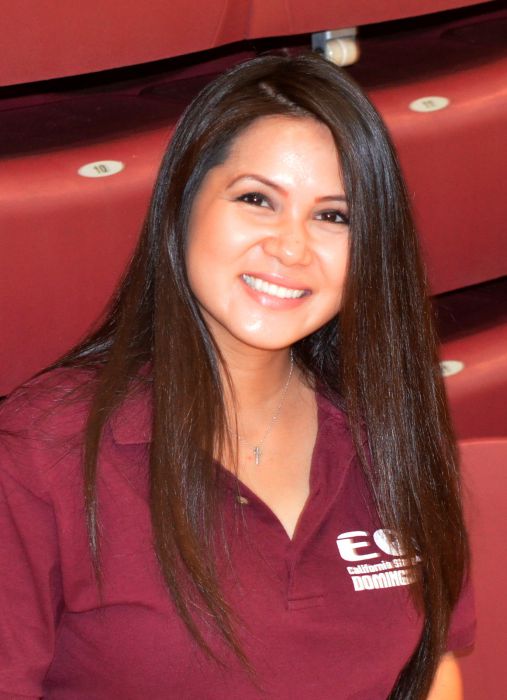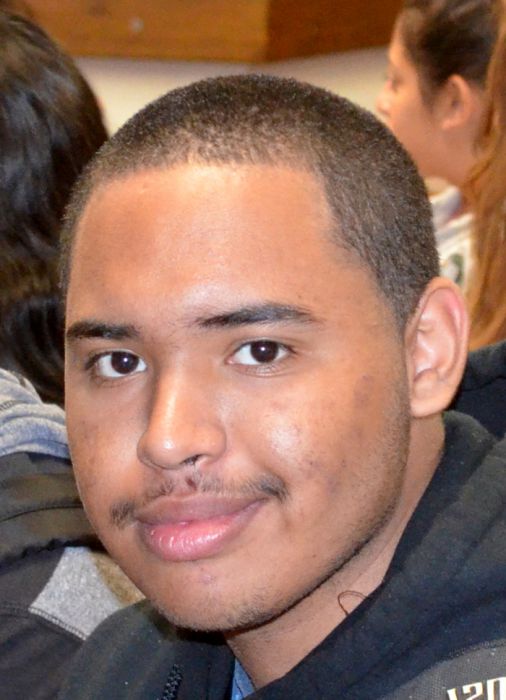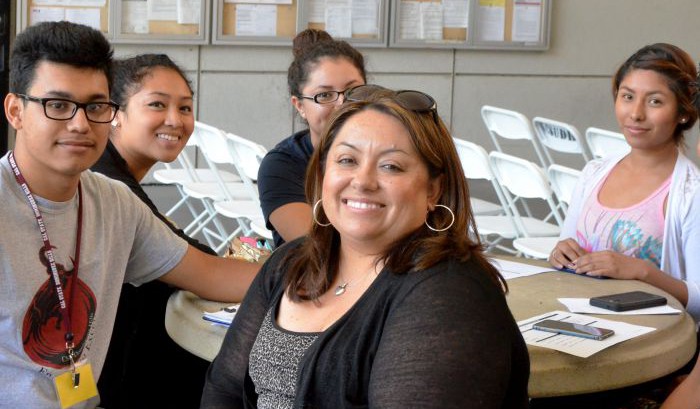
Standing outside the University Gymnasium early on a Friday morning, Summer Bridge Academy (SBA) peer mentor Alyssa Martinez begins tossing a roll of yarn across a large circle of incoming California State University, Dominguez Hills (CSUDH) students.
The first student to catch the yarn answers three questions to become acquainted with his group of peers and to join the “unbreakable” circle before tossing it to another student who does the same. As the exercise continues a “web” begins to form.

“This is one of my favorite activities. After we’ve thrown the yarn across several times we create a web that connects the students to each other. We ask each of them ‘What’s your name?,’ ‘What bad study habit do you have that needs to be fixed?,’ and ‘What superhero would you be, and why?,’ said Martinez, a psychology major with a minor in criminal justice who is working as an SBA peer mentor for her second summer. “In the end, the web that is created is strong. It symbolizes our group–a strong group of students and mentors that we hope will endure throughout college.”
While the six-week SBA program’s overarching goal is to strengthen the English and/or math skills of students who require preparatory courses in those subjects based on their English Placement Test (EPT) and Entry Level Math (ELM) exam scores, establishing a strong support system is key to their ultimate success.
The web exercise also serves as a resource for the new students, much like the workshops, advisement and other social and academic offerings of Summer Bridge. It also provides a mental archive of peer experiences and common academic issues for them to access when confronting challenges while studying.

“Peer mentors work with the students to get them engaged. They come up with activities that are relevant to the workshops that we host and their advisers facilitate,” said Katrina Hermoso, interim associate director of CSUDH’s Early Opportunity Program (EOP). “The exercises are team building in nature and help the students develop relationships during the summer so when the fall semester begins they know they have someone to turn to when they need advice or other types of assistance.”
The SBA program caters well to the unique needs of first-time college students and freshmen, many of whom grew up in underserved communities. It is also plays a significant role in helping CSUDH carry out its six-year Strategic Plan, such as increasing the federally-defined freshmen graduation rate and increasing service learning training for its students.
Yvorn Burns, an incoming CSUDH freshman, got a lot out of the yarn exercise and other projects he has participated in while in the SBA.
“Today I learned what my learning style is–visual learning [when ideas, words and concepts are associated with images],” said Burns. “It’s interesting to socialize with others students and learn many of us have similar issues. I was asked, ‘What distracts you while studying?’ I said that I really don’t study, I just learn it by memorizing the material. I told them that to fix that problem I would try to focus on what I’m studying more to better understand it.”
Courses and Workshops

The SBA students also spend many hours during the six-week program in intensive math or English classes that are designed to get them ready for college-level English and math courses they must take as part of the general education (GE) requirement to complete their degrees. The rest of the week is focused on the student connection activities and workshops to further prepare them for their first year in college.
“The SBA English and math classes are taught by our faculty,” said Hermoso. “It works out really well for the students because the classes are small and supportive, which means they’ll have plenty of direct interaction with the professors, who are very passionate and really want to see these students succeed.”
The SBA adviser-led workshops focus on such topics as career and major exploration, social justice, health and wellness, identity, as well as information literacy and learning styles–the two workshops the students were attending that Friday. The students may also receive one-on-one advisement and tutoring after the workshops.
“During Information Literacy one thing we try to teach them is how to do research and be real scholars so they know how to handle and avoid some of the issues that many students face, such as plagiarism,” said Hermoso. “We try to be proactive to help them build those skills early.”
Along with the incoming CSUDH students, Martinez and the other peer mentors get the opportunity to learn essential skills as they assist the advisers in the workshops; skills that will significantly pay off when they enter the workforce.
“I will be working with the students on learning styles and time management with my adviser during the workshops today,” said Martinez. “In the learning styles workshop, we teach the students how to learn within themselves, how to study productively and how to adapt to circumstances around campus or in situations with professors in ways that fit their learning styles, whether they are visual, auditory, or kinesthetic.”

The resources offered during SBA will continue for the students during their first year in school; as SBA students they are part of either the university’s Encounter to Excellence (ETE) or EOP programs, which offer one-on-one advising, workshops, supplemental instruction and peer support.
Brittany Fehribach, a Palmdale resident who currently lives in University Housing, learned in SBA how to take advantage of some of the more tangible things CSUDH has to offer new students.
“The Information Literacy workshop was very useful because in regular classes you don’t really hear too much about the resources available to new students. But they really help you in Summer Bridge,” said Fehribach. “A lot of resources were made available to me; things I didn’t even know about, such as free tutoring for ETE students. Other students have to pay. They also tell you how to find jobs and internship opportunities. I have friends who are coming in the fall and I was telling them I’ve joined this program, I’ve joined that club.’ They wondered how I knew about all this, and I said, ‘Summer Bridge.’”
